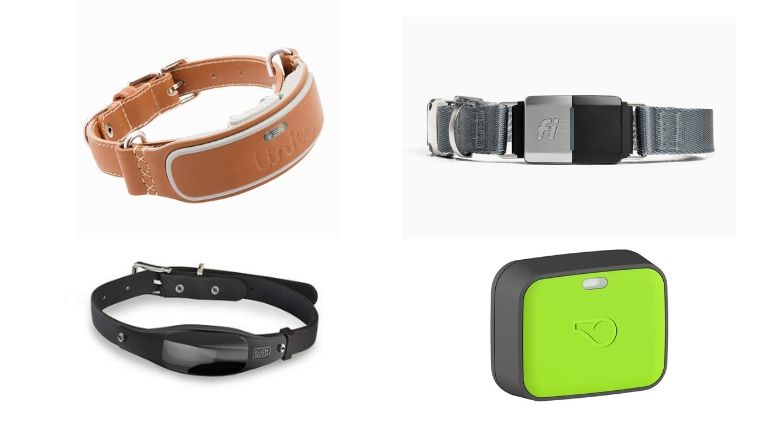
These smart collars use GPS, Wi-Fi, and cellular data to send stats to your smartphone, regardless of where your dog may be. It’s the next generation of ensuring your dog’s health — it shows you their location at all times and acts as a fitness tracker for your pooch as well. For those who want to keep closer tabs on their dog, here’s our list of the best smart dog collars.

|
|
Price: $149.00 Shop now at Fi Smart Dog Collar | Shop now Read our review |

|
Amazon Customer Reviews
|
Price: $140.40 Shop at Amazon | Shop now Read our review |

|
Amazon Customer Reviews
|
Price: $116.42 Shop at Amazon | Shop now Read our review |

|
Amazon Customer Reviews
|
Price: $117.61 Shop at Amazon | Shop now Read our review |
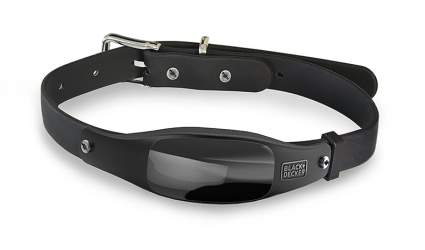
|
Amazon Customer Reviews
|
Price: $45.99 Shop at Amazon | Shop now Read our review |
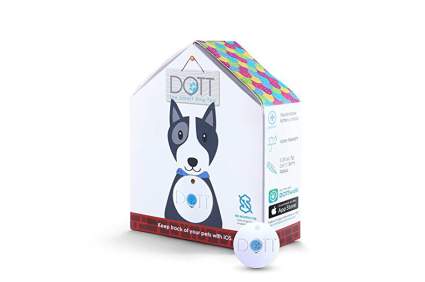
|
Amazon Customer Reviews
|
Price: $79.99 Shop at Amazon | Shop now Read our review |

|
Amazon Customer Reviews
|
Price: $69.99 Shop at Amazon | Shop now Read our review |
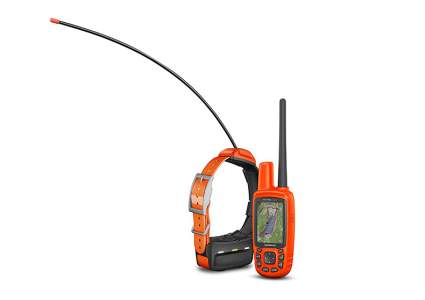
|
Amazon Customer Reviews
|
Price: $729.99 Shop at Amazon | Shop now Read our review |
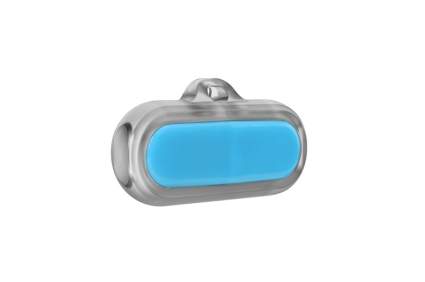
|
Amazon Customer Reviews
|
Price: $29.99 Shop at Amazon | Shop now Read our review |

|
Amazon Customer Reviews
|
Price: $69.95 Shop at Amazon | Shop now Read our review |

|
Amazon Customer Reviews
|
Price: $124.95 Shop at Amazon | Shop now Read our review |
-
1. Fi Smart Dog Collar
Price: $149.00Pros:- Excellent battery life
- Good build quality with nice hardware
- Modern wireless connectivity using LTE-M network
- Handsome, streamlined look
Cons:- GPS tracker requires monthly service plan for connectivity — about $8.25 per month
- Location accuracy could be better and causes some notification misfires
- Metal nameplate can fall off easily (dependent on collar batch)
- No ability to manage subscriptions within the app
In the nascent smart dog collar field, I think the Fi Smart Dog Collar stands out . The sleek design, modern connectivity, and long battery life make it the best choice going at the moment.
While the Whistle below functions more like an Apple Watch does for humans, with better, more detailed tracking of activity, it can’t come close to the three-month battery life of the Fi. The Fi achieves this using low-power AT&T LTE-M cellular networks, which is a vast improvement over most of the rest of this list, which either use dated and depreciating 2G networks or can only use Bluetooth or wi-fi.
The base remains plugged in at all times, connected to wi-fi. When your dog is at home, it relies on this instead of the cell signal, which futher reduces strain on the battery. This also sets the centerpoint for the geofence, which will alert you when your dog leaves the area.
There are definitely some kinks to be worked out. The nature of the LTE-M connection means it only pings when needed, but that can happen even with the collar in wi-fi range, which can sometimes cause pretty inaccurate map views and false notifications. You’ll also need to confirm that there’s good AT&T coverage where you are, since it requires their network.
I have a very large house and an acre of land, so I don’t always have line of sight with my test pup, a young and extremely fast husky. It startled me a few times before I got used to knowing where the sensitive spots in my yard were.
The app could also be better. It’s not very intuitive at all and isn’t customizable. The step goal is set to 10,000 regardless of your dog’s breed or other needs, and you can’t manage your subscription – $99 a year and required for the safe zone notifications and activity history – from inside it, for some reason.
All that said, the outstanding battery life and overall design make it worth it for me. There are some false starts now and again, but I’d rather be prompted to check on my dog than discover him missing without any warning.
-
2. Whistle Go Explore Health & Location Tracker for Pets
Pros:- Works on any collar up to one inch wide or on dedicated collars
- Waterproof
- Defined “Whistle Zone” alerts you when pet leaves the area
- Up to 30 day activity tracking
Cons:- GPS tracker requires monthly service plan for connectivity — starting at $6.95 per month
- Battery life easily shortened by very active GPS use
- Must have reliable AT&T network coverage when away from wi-fi
- A bit pricey considering you still need to supply your own collar
In contrast to the Fi above, you’d opt for this smart dog collar is activity tracking is the primary focuse of your needs. The battery life is much shorter, but the app and data experience is far richer.
The Whistle Go is part of a continuously-improving product line, the previous generations of which is the Whistle 3. While the 3 combined what was previously two different devices to cover the activity tracking and GPS capabilities, the primary focus of of the Go and Go Explore is extended battery life.
The Whistle 3 had a maximum of seven days of battery life, while the Go base model can hit 15 and the Go Explore can get to over 20. Both take about two hours to charge, but in practice, I find that the battery life is quite a lot shorter. I tested a Go Explore unit provided to me by the company on my relatively lazy blue nose pit and found myself recharging it about as often as my wife recharges her Apple Watch, about every two to three days on average.
If you’re already in the habit of tossing a smart watch on a charger and sync up the charge cycles with the Whistle, this should be no problem at all for you. If you’re the type to take your dog running or on frequent adventures, you’ll want that very relaible and data-rich tracking experience which does have a negative impact on battery life. The longer battery life of the Fi makes it a better dog-minder and GPS tracker, but the app and flexibilty of the Whistle means it’s a better choice for monitoring your dog’s activity overall. Opt for the Go Explore, though, to maximize your battery life.
This waterproof smart dog collar tracker utilizes AT&T’s cellular network to relay information back to your smartphone, which of course means that when your dog is away from wi-fi, that coverage will need to be present in your area. This includes notifications about leaving a pre-defined safe area, which piggybacks on your wi-fi connection and ensures that your dog is close to home at all times. It also includes daily activity information, which can be tailored to your pup’s age, breed, and weight. These notifications can be delivered via text, app, or email.
Being that it uses a major carrier’s network, there is a monthly subscription fee starting at $6.95, same as the Link AKC. This is managed within the app and doesn’t require a separate contract. Whistle also provides above-average customer service, should you have any questions or issues.
The adapter works on any standard one inch dog collar, but you can also opt for using Whistle’s custom-designed collar just for the purpose.
Find more Whistle Go Explore Pet Tracker & Activity Monitor information and reviews here.
-
3. LINK AKC Smart Dog Collar
Pros:- GPS tracking shows the location of your dog at all times
- Customized activity level recommendations
- App-controlled LEDs for visibility
- Ambient temperature alerts
Cons:- Somewhat pricey
- Requires monthly service plan for connectivity — starting at $6.95 per month
- Not recommended for dogs under 10 pounds
- Battery life (three days max.) shortened by very active GPS use
Winner of the “Best of Innovation” prize at CES 2017, this all-in-one solution combines a GPS locator with an activity tracker into an single attractive collar. Available in brown leather or a black sport pattern, this is a complete solution for knowing your dog’s whereabouts and activity at all times.
Along with the home base, this collar creates a so-called “digital safe zone” around your home. If your dog leaves that area, it will send an alert to your smartphone immediately. As it tracks your dog’s activity, it will make recommendations tailored to your pet to encourage healthier habits. The app will also let you record vet records so you have a complete picture of your dog at any given time. To top it off, the collar has as bright LED that is controlled with the app.
As with the others, AT&T cellular service is used for the location information relay. Service in your area is necessary, and occasionally there can be lags and false notifications as location and satellite positions change. This is the nature of the beast with these devices to some degree, and this was one of the first to come out, so it lags behind newer competitors for being slightly ahead of its time.
You can use this with your own collar, but the tracker and the collar holster for it are both clad in brown leather, so you might be better off with the one included.
There is a service charge associated with the device, starting at $6.95 per month, which you can read more about here. You can also choose to bundle a year of service with the purchase of the device.
Find more LINK AKC Smart Dog Collar information and reviews here.
-
4. Findster Duo+ Pet Tracker
Pros:- No monthly fees
- Does not require cell signal
- Real-time alerts and activity history
- Waterproof
Cons:- GPS use severely limits battery life; down to 12 hours in some cases
- Requires you to carry something other than your phone
- Somewhat pricey
- Not ideal for pets who escape from home
In contrast to the other options on this list, the Findster Duo+ uses a pair of matched transponders to allow you to find your dog up to three miles away. It fits somewhere between the Dott and the short-range GPS transponder units with large antennas that allow them to relay location back to a handheld unit in the field.
Basically, this works by putting one module on your dog’s collar and keeping the other with you. The MAZE technology will map your two locations using GPS, but without requiring cell coverage and the monthly fees it incurs. The range varies between half a mile and three miles, depending on site lines.
It won’t help you in quite the same way a true combination GPS/wi-fi/cellular collar will if your dog escapes your home, but it’s great for those times when you lose sight of them on the trails or at the dog park.
It’s also useful for day-to-day activity tracking. By turning off the GPS when you’re not out of the house with your dog, you can extend the activity tracking battery life up to seven days, which is about mid-pack among our options.
Ultimately, this will be useful for generating health-related data and could help find your pet in a pinch. It’s not the ideal monitor for dogs who might escape from your home given the short battery life and relatively short range, but it will grant piece of mind compared to no tracking at all.
Find more Findster Duo+ Pet Tracker information and reviews here.
-
5. Black+Decker Smart Dog Collar
Pros:- Two-way audio
- OLED screen displays pertinent info about your dog
- Customizable geofence zones
- Water resistant up to three feet
Cons:- Only fits dogs with a 15 to 21 inch neckline
- Relies on T-Mobile’s 2G network, which is outdated
- Somewhat pricey considering the network drawbacks
- Requires monthly service plan for connectivity — starting at $6.95 per month
Another very similar model comes from an unlikely sources — toolmaker Black+Decker. This is an ultra-sleek, modern-looking collar that offers virtually the same functionality as the Link AKC, with one additional bonus: two-way audio.
Much like the pet cams we discussed in this post, you can use the app to call your dog’s collar so it can hear your voice and you can hear what’s going on around it. That’s in addition to the expected GPS location, activity tracking, and safe zone options all on-board.
This water resistant unit also contains a large OLED screen, which displays your dog’s name and your contact information normally, but can be updated with a different message during special situations. It’s available in your choice of black or purple.
Like the others, it requires a $6.95 per month subscription, and the first 90 days are free. It relies on T-Mobile’s 2G network, which is fairly limited. There’s a coverage map on the product page to give you an idea of where it will work best.
Find more Black+Decker Smart Dog Collar information and reviews here.
-
6. Dott The Smart Dog Tag
Pros:- Six to nine month battery life
- Activity and pet health tracking
- No subscription fee
- Lost pet notification platform
Cons:- No GPS – must be within a certain range of devices
- Activity tracking isn’t automatic; manually-created records
- Android version still in beta
Though it doesn’t quite fit this category, we’ve opted to include the Dott here because it interfaces with a lot about modern pet ownership. This is a non-GPS-enabled device that leverages a network of users to help locate pets, while also making pet health and activity tracking possible within the app.
If you’ve ever lost a pet (as I have), you know there are pretty dedicated neighborhood Facebook groups that do an okay job of updating the status and keeping an eye out for lost animals. This device takes that idea one step further: each user in the Dott network using a connected device covers an area of 384,844 square feet. If the Dott is within the range of just one, it is ‘in-network’ and trackable on the app. In addition, when a pet goes missing, the entire network is notified, supplemented with social media posts.
This is also meant to interface with apps like Wag and Barkly, or any other pet caretaker role. You can send invitation codes from the app which will allow whomever is taking care of your dog to enter walks and potty break activity, along with the benefit of the tracking should your dog escape during this time.
Since it doesn’t rely on a cellular network, there are no subscription fees. However, like the others, this will be far more successful in populated areas where many people are using the app so that the coverage area is better. The other upside is that the battery life is measure in months, not days, since there are no energy-intensive radios on board.
We’ve featured the iOS version here, but an Android version is available in beta release. Think of this as a next-generation pet chip that anyone with an app can leverage.
Find more Dott The Smart Dog Tag information and reviews here.
-
7. Tractive GPS Pet Tracker – 3G US Edition
Pros:- Location history
- Virtual fence
- Water resistant
- Real-time tracking
Cons:- Overly large
- Slow to connect
- Somewhat confusing to set up and use
- Requires monthly service plan for connectivity — $5 per month
A slight step up from the Find My Pet would be this option from Tractive. It uses 3G cell service, not 2G, thanks to an integrated SIM card. The app allows for real-time tracking with a location history so you can keep up with your dog’s movements.
The battery takes two hours to charge and will last between two and five days, depending on activity. There is, of course, a virtual fence option that alerts you when your dog leaves a certain area. The app is available for both iOS and Android.
The monthly subscription starts at $5 with different options for notifications. It’s also a bit on the large side compared to other options, so this would definitely be best for larger pets.
Find more Tractive GPS Pet Tracker – 3G US Edition information and reviews here.
-
8. Garmin Astro 430/T 5 Dog Tracking Bundle
Pros:- Nine mile range
- 20-40 hours of battery life
- Virtual fence
- Track up to 20 dogs
Cons:- Long antenna means this probably won’t be worn all the time
- Very expensive
- Not unlimited range like cell-enabled options
- No smartphone compatibility
We included a Garmin device on our training collars post because they make excellent, high-quality units that are very reliable. This is aimed at the sport dog who will be out tracking and hunting, rather than the suburban dog who might escape your yard. Still, for short term use or perhaps on larger plots of land or farms, it offers powerful GPS tracking.
This collar and GPS receiver unit bundle allows you to track up to 20 dogs at a range of nine miles. It combines traditional GPS and GLONASS reception for greater accuracy. It updates every 2.5 seconds for close to real-time tracking.
Maps are preloaded, but the bundle includes a one year subscription for updating the satellite imagery. At this price, it’s probably overkill for dogs that never leave the yard, but a nine mile radius is likely to cover the majority of runaways, so if you have multiple uses for it, it’s definitely worth considering.
Find more Garmin Astro 430/T 5 Dog Tracking Bundle information and reviews here.
-
9. Poof Bean Pet Activity Tracker
Pros:- Bluetooth enabled data sync
- 60 day battery life
- Waterproof up to one meter
- Available in four colors
Cons:- No location tracking
- Some units have faulty batteries (if this is a concern, consider the Pea model, which uses a coin cell battery)
- Lacking user instructions
- Some users find the app limited
This one-inch activity tracker utilizes Bluetooth to sync fitness data to your phone. This includes calorie and sleep tracking as part of a general activity profile. This profile can then be added to the Poof community for added gamification.
The scoring and ranking is probably unnecessary, but if you find yourself motivated by your FitBit, the same idea works here. If nothing else, pure competitiveness will help remind you to bring your pup for a walk more often than you might otherwise.
This is a super small unit, measuring only an inch. It has a rechargeable battery that lasts up to 60 days, though some users report that it can be a little wonky at times. If you don’t want to take the chance, Poof also make the Pea model, which uses a coin cell battery instead.
As an added bonus, you can post that your pet is lost and it will broadcast to the community. If your pet happens to come within range of another Poof user’s device, it will send a notification and help to reunite them. The range of a Bluetooth device is only 33 feet, but it’s better than nothing.
Find more Poof Bean Pet Activity Tracker information and reviews here.
-
10. FitBark GPS Dog Health Monitor
Pros:- Tracks calories, sleep quality, and distance traveled
- Waterproof design
- 6 month battery life
Cons:- No GPS tracking
- No remote check-in feature
- Limited color options
The FitBark 2 is a feature-rich dog fitness tracker that functions more or less like the FitBit health tracker (though it is made by a different company). This Bluetooth-enabled activity tracker pairs with a companion app to track fitness metrics such as distance traveled and calories burned.
This information is recorded in a companion app that is available for both Android and iOS devices. And since you’re usually getting some exercise alongside your dog, you can link your activity tracker including FitBit, Apple Watch, Health Kit, Google Fit, or Jawbone devices so you can track your workouts too.
The FitBark 2 also monitors your dog’s heart rate to indicate high-anxiety situations as well as its sleep. The Sleep Score portion is useful for determining if your dog has oncoming skin disorders by determining whether it’s waking often to scratch. The Health Index brings all these metrics together into one score so you and your vet can make a determination about the overall condition of your pup.
The only downside with this product is that it does not have GPS tracking capabilities. The manufacturer does make a FitBark GPS version of this wearable but it is currently out of manufacture so I cannot recommend it over more actively supported devices. This product can also be found in our roundup of the best dog gadgets ever.
Find more FitBark 2 Dog Activity Monitor information and reviews here.
-
11. PetSafe Smart Dog Trainer Collar
Pros:- Waterproof, submersible up to five feet
- Three types and 15 levels of stimulation
- Replaces typical handheld unit with smartphone functionality
- Free dedicated app
Cons:- Range is only 75 yards
- Instructions for use lacking
- Shock mechanism may be considered inhumane for some users
Most traditional dog training collars require you to carry around a radio transmitter in order to trigger the corrective action. PetSafe has paired its collar with a Bluetooth radio so you can use your smartphone instead. We all carry our smartphones in the normal course of our day, so this improves the convenience of such a devices considerably.
The effective range on this is about 75 yards, which is fairly limited for this sort of device. However, assuming you’ll only put it on when you’re actively training, this may not be too much of a concern, and should certainly work inside the house. Correction stimulation includes one level of beeping, one level of vibration, and 15 levels of “static stimulation” or shock to prompt corrections. Shock collars are relatively standard and generally do not cause any harm, but if you’re opposed to them, you’ll still have the first two options available to you with this collar.
Find more PetSafe Smart Dog Trainer Collar information and reviews here.
If you have a dog, chances are good that it wears a collar of some sort at all times. Usually, this collar is chosen for its good looks more than its function. Sure, some dogs require special collars, but the average pup just needs something to hold the ID tags.
A growing range of products makes these collars into more than just fashion statements. While training collars (especially ones to curb barking) have been around forever, there's a new class emerging which gathers information about what your dog is up to and where.
GPS Dog Collar
The distinction between smart dog collars and GPS dog collars is one of connectivity. The classic image of the GPS dog collar is the Garmin Astro 430/T, which is a dedicated GPS device that can track the transponder worn on the dog's collar for a handful of miles. These are useful for hunting and sport dogs, but not quite as useful for general purpose use at home. We included the Astro on our list because it's one of the best in terms of pure GPS performance, but it lacks the connectivity of newer designs.
By contrast, smart dog collars have a GPS device on them, much like all modern smartphones, but they also contain wi-fi and celluar radios which then combine with modern app design to transmit that data over much larger distances. Just like with wi-fi enabled pet cams, as long as your smartphone has signal, you can track your pet's location and activity.
Fitness Tracker for Dogs
Another use for smart dog collars is keeping an eye on your dog's health and activity levels. The best smart dog collars keep some log, even if it's just a pedometer or a rough idea of when walks occur, that you can review with your vet to determine whether your pet is getting enough exercise.
The pet obesity epidemic continues to spread, so giving your dog their own activity tracker, with the added benefit of knowing where they are, can go a long way to preventing issues. A GPS tracker for dogs keeps them safe from harm when they escape, but a dog fitness tracker keeps them safe from longer term issues.
For this list, we've included several of the new class of information-gathering collars, though to be absolutely clear, only a handful of them are actual collars — most are small devices designed to attach to the collar your dog is already wearing. In addition to these fully modern, be-all, end-all contraptions, we've also included a few solutions that perform only one function, be it locating lost dogs or helping with training. We've broken out each style into different categories to make shopping easier.
On the whole the reviews for these products tend to be harsher than a lot of other pet tech products we've covered. Partly this is due to the fact that smart dog collars are a relatively fledgling technology; they've just not been around quite long enough to work out the bugs. The other reason — and this is absolutely key — is that most GPS dog collars and related products rely on cellular networks for tracking.
It makes sense, if you think about it. How else can these relay messages across great distances? However, that means two things: If you don't have great cell coverage where you live, it's unlikely that most of these will work as well as you might like. Second, some rely on aging cellular infrastructure, including 2G networks, which are on their way out. These sorts of complaints are common to virtually all of these products, so keep that in mind while you're shopping.
As an alternative, you could consider personal trackers such as the Spy Tech GL300, which we put on our GPS tracking devices for cars post. They aren't specifically designed for the job and they're on the large side, but it's an option.